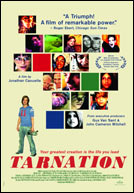 One of the year’s big stories in film was Jonathan Caouette’s haunting autobiographical feature Tarnation (trailer), famous as much for its methodology and tiny budget as for its strength as cinema. Made entirely on Apple iMovie on a desktop computer, and costing a mere $218.32, Tarnation is a patchwork quilt of sound, image and testimony, chronicling the troubled life of its author and his relationship with his fractured mother.
One of the year’s big stories in film was Jonathan Caouette’s haunting autobiographical feature Tarnation (trailer), famous as much for its methodology and tiny budget as for its strength as cinema. Made entirely on Apple iMovie on a desktop computer, and costing a mere $218.32, Tarnation is a patchwork quilt of sound, image and testimony, chronicling the troubled life of its author and his relationship with his fractured mother.
The remarkable thing about Tarnation is that Caouette made it in much the same way he might have written a print autobiography – alone, at a computer, pouring over a lifetime’s accumulation of notes, scraps and memories. Only, the notes and scraps are in the form of VHS and Super-8, photographs and answering machine tapes. Growing up in the Houston suburbs, Caouette became literate in a multitude of forms, weaving a rich web of fiction as a blanket between him and his often-grim reality. These fictions ranged from eerie staged “confessions” by an 11-year-old Caouette impersonating a battered woman, to glamorous lip-synch music videos, to high school slasher flics. Tarnation is as much the story of this self-education in alternate forms of writing as it is of Caouette’s family and upbringing.
Watching Tarnation isn’t quite like watching other films, and the fact that it was made by a single, solitary person has a lot to do with this. It has long been taken for granted that film is the product of collective labor, that behind each frame lurk dozens of invisible hands. But here, as with a book, there is a single author, and you sense palbably that you are witnessing the craft of a private forge, far from the world of studios and crews – far from our usual notion of “the production.” And as with a book, our encounter is very personal and unmediated – we are brought directly into the dreams and psychedelia of the author’s mind.
Caouette describes the experience on the film’s website:
 “TARNATION is designed to mimic my thought processes so the audience can also feel like they’re in a living dream, which can be scary and intense, but also beautiful and glorious. TARNATION is a documentary in the sense that it’s a true story but it’s also a happening, an encounter, and a way for you to meet me and for me to meet you.”
“TARNATION is designed to mimic my thought processes so the audience can also feel like they’re in a living dream, which can be scary and intense, but also beautiful and glorious. TARNATION is a documentary in the sense that it’s a true story but it’s also a happening, an encounter, and a way for you to meet me and for me to meet you.”
Caouette’s film demonstrates the possibility for lone artists to engage powerfully in media that were previously very difficult and expensive to access. Already, people are producing highly polished videos made with digital snapshot cameras. The modes of production – of writing – will continue to increase and expand.
Tarnation is also a clue to possible new directions for documentary and autobiography in the digital age, and hints at ways that films and books might begin to merge.
Gus Van Sant, who became one of the film’s executive producers, told Wired in January: “People assumed that one day film would be as accessible and inexpensive as writing, and now it practically is. For the price of a typewriter, you can make films with sound and burn them on a DVD.”
Monthly Archives: December 2004
predicting 2005
For the holiday lull – a couple of gazes into the crystal ball:
“A Look Ahead” on Searchblog
“Ten Ways Communications Will Change In 2005…” on Andy Lark
Everyone is predicting another big year for blogs, though conspicuously absent from these lists is any mention of big intellectual property cases headed for the courts, most obviously the Supreme Court-bound Grokster case. And I would guess it’s just a matter of time before a high profile case emerges testing fair use practices in universities and beyond.
p2p for profit
The Washington Post reports that mashboxx, the latest venture of Grokster president Wayne Rosso, intends to “clean up and legitimize” peer-to-peer music file sharing on the Internet, and to give record companies a piece of the pie (in spite of Rosso’s past demonization of said companies). Mashboxx will employ SnoCap – a “copyright management interface” technology developed by Napster creator Shawn Fanning, enabling copyright owners to trace the movement of files containing their content, and to extract fees from the people sharing them. SnoCap essentially “fingerprints” files so that content owners can keep track of them and set the rules and rates of their trading.
![]() I suspect that the rates will be too high, of the dollar-a-song variety, which seems downright exploitative given the ease and inherent cheapness of p2p networks. While I’m cautiously optimistic that the mashboxx move presages an eventual overhaul of the music industry, and may be a small step toward reconciling copyright concerns with networked free culture, this seems more like a hostile move to squeeze music sharers. Given the scale of the p2p phenomenon, a nickel-a-song could amount to sizeable profits. Remember: it’s no longer about a single point of sale, but multiple points of exchange. But the recording industry is a rapacious animal, and is loathe to believe that it can actually make profit without extortion. Remember the long tail…
I suspect that the rates will be too high, of the dollar-a-song variety, which seems downright exploitative given the ease and inherent cheapness of p2p networks. While I’m cautiously optimistic that the mashboxx move presages an eventual overhaul of the music industry, and may be a small step toward reconciling copyright concerns with networked free culture, this seems more like a hostile move to squeeze music sharers. Given the scale of the p2p phenomenon, a nickel-a-song could amount to sizeable profits. Remember: it’s no longer about a single point of sale, but multiple points of exchange. But the recording industry is a rapacious animal, and is loathe to believe that it can actually make profit without extortion. Remember the long tail…
And this issue doesn’t just pertain to music sharing. As ebooks become a more frequently trafficked commodity on p2p networks, we will see the same struggle arise. Already, questions abound about Google’s library initiative and readers’ access to copyrighted texts. And the New York Public Library seems to think that ebooks are a threat that must be subdued before all hell breaks loose.
Technology News: Technology: Fanning’s Snocap Builds Bridge Between Labels and P2P
google takes on u. of michigan library – the numbers
– 7,000,000: Volumes in the U-M library to be digitized.
– 2,380,000,000: Estimated number of pages.
– 743,750,000,000: Estimated number of words.
– 1,600: Years it would take U-M to digitize all 7 million volumes without Google’s special technology.
– Fewer than 7: Years it will take to digitize the volumes with Google’s technology.
– $1 billion: Estimated value of the project to U-M.
Source: John Wilkin, associate university librarian, library information technology and technical and access services, University of Michigan
U-M’s entire library to be put on Google – Detroit Free Press
digital torah
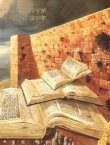 Varda Books, in collaboration with The Jewish Publication Society, has over the last few years been publishing a series of electronic editions of sacred Jewish texts, commentaries, historical studies, and critical resources, all leveraging the dynamic analytic capabilities of digital media. Popular on Varda’s online retail site, ebookshuk, are book “bundles” – collections of sacred texts and critical commentaries that enable nimble and complex intertextual analysis, or, as described for the “JPS Digital Torah Library,” serve as the “cornerstone of one’s personal, open-standards, inter-linked, cross-file-searchable, digital Jewish library.” Other bundles include “Judaic Scholar Digital Reference Library I” and “The Rabbinic Bookshelf.”
Varda Books, in collaboration with The Jewish Publication Society, has over the last few years been publishing a series of electronic editions of sacred Jewish texts, commentaries, historical studies, and critical resources, all leveraging the dynamic analytic capabilities of digital media. Popular on Varda’s online retail site, ebookshuk, are book “bundles” – collections of sacred texts and critical commentaries that enable nimble and complex intertextual analysis, or, as described for the “JPS Digital Torah Library,” serve as the “cornerstone of one’s personal, open-standards, inter-linked, cross-file-searchable, digital Jewish library.” Other bundles include “Judaic Scholar Digital Reference Library I” and “The Rabbinic Bookshelf.”
Jewish scriptural study and the Talmud have often been cited as among the earliest great hypertext traditions. Layered interpretations and non-linear modes of reading have long been central to this tradition, which continues to evolve into digital space.
tower of babel or trivial pursuit?
Read New York Times Article
In an article in yesterday’s NY Times, Alberto Manguel compares the Genesis story of Babel and the library at Alexandria with their alleged modern-day counterpart–Google’s commitment to digitize all human knowledge. Are we constructing a modern-day tower of Babel? A monument to the hubris of what might be possible if we could just get a little smarter. Will Google help us find answers to the big questions: where did we come from, and what’s the meaning of it all? I went online to find out. I Googled the question “What is the meaning of it all?” and got the following:
city chromosomes – an sms chronicle
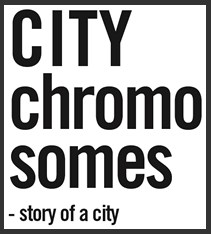 Found this on textually.org. The City Chromosomes project is a sort of scrapbook of the city of Antwerp made entirely from text messages beamed in from mobile phones. Further evidence of the new genres emerging from this technology. An english version has just been published under a Creative Commons license.
Found this on textually.org. The City Chromosomes project is a sort of scrapbook of the city of Antwerp made entirely from text messages beamed in from mobile phones. Further evidence of the new genres emerging from this technology. An english version has just been published under a Creative Commons license.
Also take a look at this sister project, CityPoems, from Leeds. Posts from the Leeds project are interspersed through the english version of “Chromosomes.”
From the introduction to “City Chromosomes”:
“The city of Antwerp is full of writers. And many of these writers describe their city, often in splendid stories, novels and poems that gain a wide readership. In this way, they determine a large part of our image of the city. But what about the people who only readers, or even those who do not care for reading, what do they think of the city? And would it not be possible to persuade them to write this down?
“This was the point of departure for the City Chromosomes project. We got the idea of gathering sms messages. Nearly everybody has a mobile phone. Everybody has a moment to spare to type in a message. This was the ideal way to make the project accessible to everybody. The people of Antwerp, and anyone else with something to say about city, could submit their impressions anonymously. We established 25 text sites across the city, and the contributors could indicate with a simple code to which part of the city their message applied. By means of posters, flyers and ads, we asked people for their impressions. The only restriction: the messages should not be longer than 160 characters.”
enter the cybrarian
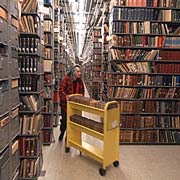 The recent buzz surrounding Google’s library intitiative has everyone talking about the future of research, which inevitably raises the question: how will the digitization of library collections change the role of the librarian? I would guess that, far from becoming obsolete, their role will in fact be elevated in importance, if not necessarily in status. They could very well come to be our indispensible guides through the labyrinth – if perhaps invisible, engineering behind the digital walls.
The recent buzz surrounding Google’s library intitiative has everyone talking about the future of research, which inevitably raises the question: how will the digitization of library collections change the role of the librarian? I would guess that, far from becoming obsolete, their role will in fact be elevated in importance, if not necessarily in status. They could very well come to be our indispensible guides through the labyrinth – if perhaps invisible, engineering behind the digital walls.
It’s also important to consider the question of visualization. When you run a search on Google you are given an enormous list. This is already deeply ingrained in the day-to-day business of finding information. But these lists are basically the electronic equivelant of scrolls, with the items algorithmically determined to be most relevant placed at the top. But sooner or later we have to admit that using scrolls for this kind of business is ludicrous. There has to be a better way of arraying these vast harvests of information in a way that allows the researcher to zoom across degrees of specificity and through associative chains of context and meaning. I see no reason why a search shouldn’t take place in some kind of virtual library, emulating the physical architecture of research settings, and allowing for some of the associative or accidental echoes that so often enrich a paper trail blazed through a brick-and-mortar library. Or cannot knowledge resemble a tree, or an arterial matrix? Must we be bound to the scroll?
Returning to the question of the librarian’s role, I recalled this passage from James J O’Donnell’s 1996 paper The Pragmatics of the New: Trithemius, McLuhan, Cassiodorus:
“The librarians of the world have, moreover, already led the way, for academics at least, into the new information environment, not least because they are caught between rising demand from their customers (faculty and students) and rising supply and prices from their suppliers, and so have already been making reality-based decisions about ownership versus access, print versus electronics, and so on. In short, they are just now our leading pragmatists. Can we imagine a time in our universities when the librarians are the well-paid principals and the teachers their mere acolytes in a distribution chain? I do not think we can or should rule out that possibility for a moment”
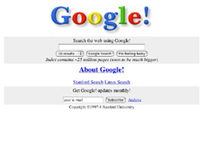
Related articles:
“Questions and Praise for Google Web Library” – NY Times
“Google’s library plan ‘a huge help'” – USA Today
“Making books readable on computer proves trying task” – USA Today
Also, I found this on Searchblog. For a trip down memory lane, check out the original Google in the Stanford archives (click on picture to right). Unfortunately, although it seems interactive, a search just brings up a bunch of stylesheets.
light reading
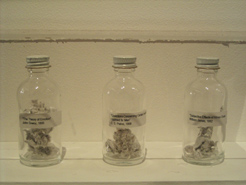 “The Book as Object and Performance exhibition (through January 22 @ Gigantic Art Space in New York, curated by Sara Reisman) presents work by over 20 artists, each using the book as a point of departure to explore the physical, sensual or conceptual dimension of reading and the written word.
“The Book as Object and Performance exhibition (through January 22 @ Gigantic Art Space in New York, curated by Sara Reisman) presents work by over 20 artists, each using the book as a point of departure to explore the physical, sensual or conceptual dimension of reading and the written word.
But despite lofty ambitions, the exhibit provides little more than light reading. Though several works are visually arresting, few do more than glide over the potentially bottomless themes at hand. Most stick to playful reorganization of materials: a pile of wooden hoops culling newspaper headlines from around the globe; a precarious tower of books with a gaping acid-chewed hole at the top; a doorway filled with crumpled sheets of paper; a dictionary with words dislocated from their definitions. A collection of small, easily forgotten pleasures.
An exception to this is a mysterious piece titled “Perseverance” by Jenny Perlin consisting of a small, worn book in a glass case, above which plays a strange film of man battling anxiety, chewing his nails to the quick. Also memorable was a one-night-only “reading” of the ten commandments by Polish-born artist Maciej Toporowicz, a piece first performed in communist Poland in 1980, and part of small program of live explorations last night, filling out the “performance” part of the equation. The gallery lights are extinguished and Toporowicz takes his place in front of an illuminated glass bowl of water, perched atop an open Bible. He places his face in the water, as though reading through the aqueous medium, and remains there long enough for the audience to start imagining.. what? That he is drowning in this sacred, much-abused text? That he is drawing impossible sustenance from its power? He begins to twitch and tremble. Finally his head rips up out of the water, gasping.
The photo above shows bottles containing philosophical texts that have been literally chewed up and spit out. Click below to see more pictures from the exhibition…
lizards! defying the laws of mass market physics
 Found this yesterday on changethis.com – a site devoted to publishing and disseminating manifestos. Documents are smartly designed pdfs, spread primarily through the viral channels of the blogosphere and personal email mentions.
Found this yesterday on changethis.com – a site devoted to publishing and disseminating manifestos. Documents are smartly designed pdfs, spread primarily through the viral channels of the blogosphere and personal email mentions.
In “The Long Tail” Wired editor-in-chief Chris Anderson predicts a new age of abundance, in which the Internet elevates niche markets and makes mass market quotas irrelevant. Of course, this is already happening, much to the distress of mass media dinosaurs, who are scrambling to protect their creaking architecture of revenue.
The “long tail” refers to the slender expanse of obscure niche sales enjoyed by a web retailer, as represented on an x-y graph. It extends from the body of high volume, mainstream sales (Wal-Mart and the like) like the caudal appendage of a lizard.
Read Manifesto: The Long Tail
